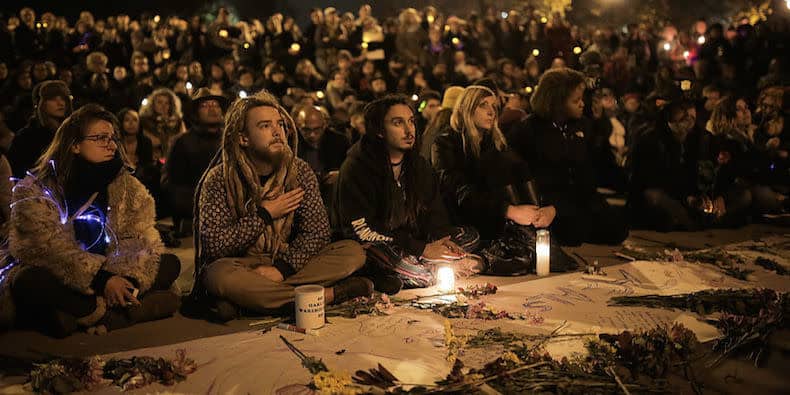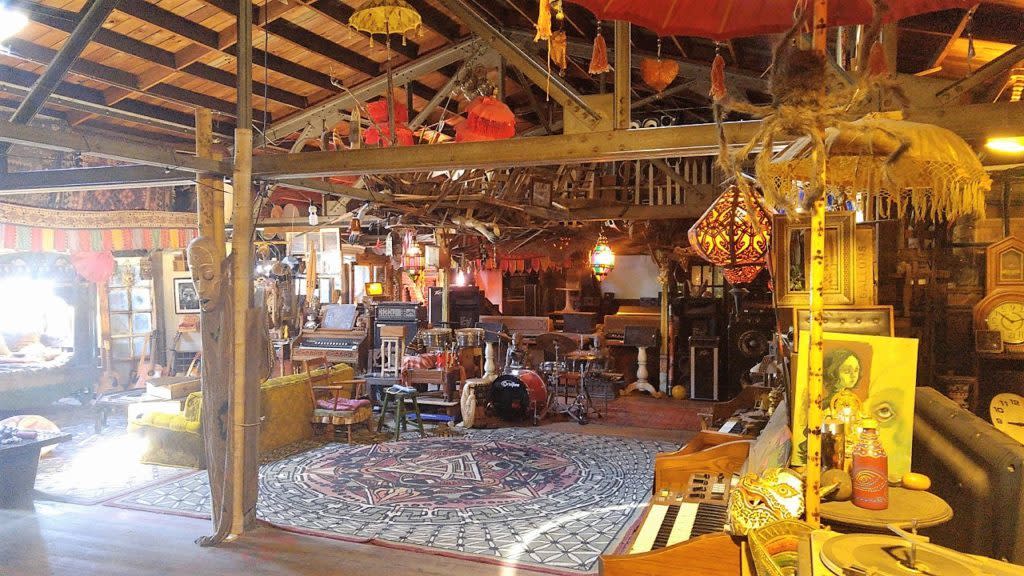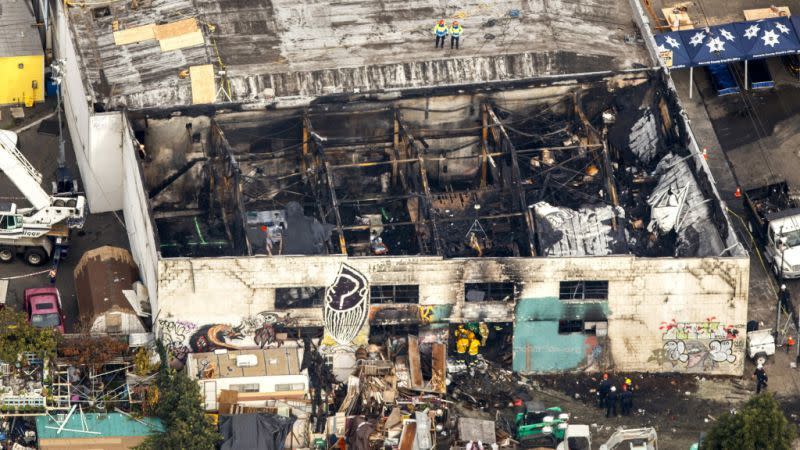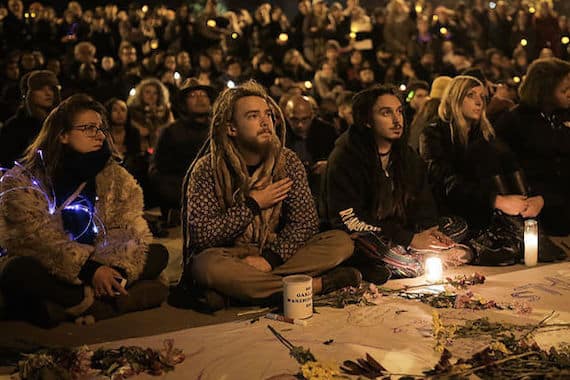The Oakland Ghost Ship Warehouse Fire has the art community and Oakland shaken. The tragedy, which occurred on December 2, claimed the lives of 36 artists. Some sources claim it could be as high as 40 as they continue to uncover the wreckage. There are many articles giving beautiful tributes to the victims of this horrible tragedy, among them Gabe Meline’s “It Could Have Been Any One of Us.”
He writes, “For those of us involved in artist spaces one way or another, the tragedy is impossible to process. I, too, have been inside a warehouse like that, we think, living, working, dancing into the night…for many of us, these spaces are what have kept us alive. In a world that demands its inhabitants to be a certain way, think a certain way, or live a certain way, we gravitate to the spaces that say: Welcome. Be yourself. For the tormented queer, the bullied punk, the beaten trans, the spat-upon white trash, the disenfranchised immigrants and young people of color, these spaces are a haven of understanding in a world that doesn’t understand—or can’t, or doesn’t seem to want to try.”
As the story continues to unfold, here’s a breakdown of the facts and what it means for the future of artist spaces.

Vigil for victims of the Ghost Ship Fire via
What is Ghost Ship?
The Oakland warehouse was an artist collective space called Ghost Ship. Spaces like Ghost Ship are hardly rare—they happen in almost every major city where creativity is booming but rent is rising to unaffordable rates. Essentially, artists join together to rent an industrial space. To subsidize their rent they throw parties or shows for cover fees and the rest of the time they use the space to make art of all kinds. These spaces often are inherently covert operations: Lease holders usually don’t hold permits for their events and residential tenants are usually illegal but prevalent.
Chor Nar Siu Ng, the landlord of Ghost Ship, had many properties in dilapidated states. The lease was held by Derick Ion Almena and he co-ran its events with Micah Allison. The commercial space was not zoned for residential tenants or events. They had been notified about concerning debris and illegal building at the location by the fire department. With rising rent and lack of funding for artists within Oakland and the United States at large, artist communities develop MacGyver-like resourcefulness to make art happen. Unfortunately, in this case, it has had deadly repercussions.

Ghost Ship before the fire via
How did this tragedy happen?
The fire began during a second-floor dance party hosted by artist collective Satya Yuga. There are many possible causes for the fire’s eruption—as of yet, the fire department has not yet released an official cause. For example, the space was full of collected objects, many of which were raw wood. Then, there was improvised electrical hook-ups for lights and music. It’s also not unlikely that people were smoking inside. Update: USA Today reports that the fire was caused by a refrigerator.
The blaze grew incredibly quickly, and with the smoke rising expediently, it trapped party-goers inside the space. Ghost Ship was built like a maze—difficult to find exits and navigate clear pathways. The people inside were trapped in the commotion. Some were able to escape by jumping out the second-floor windows, but many were not so lucky. It took four hours to extinguish the fire and there have been 36 bodies discovered. Some of the indistinguishable bodies are still be identified through dental records.

Ghost Ship after the fire via
What can we learn from this?
There’s a lot of back-and-forth about who we can blame for this devastating loss. Some are blaming the city and its lack of follow up with fire safety complaints. Others are blaming the artists for running events and living in the space illegally. Many are blaming the impossible condition for artists to survive financially as the horrible event brings attention to a lack of funding for artists and housing for those who fall under an economic bracket. According to Zillow, the rent in Oakland has risen 70% in the last five years.
There might be some truth to each of those options, but ultimately, the Ghost Ship tragedy is complicated in its cause-and-effect. It seems that all of these issues have been neglected, each of the need to ruminated on so that this doesn’t happen again.
The undeniable takeaway is that these artists were important to their communities and the people who supported their work. Ghost Ship was full of people who fought for the right to make art and championed creative expression at all costs. The personal loss of these people to those that knew and loved them is unfathomable. The loss that Oakland will experience culturally because of the deficit of these individuals will be perceptible and irreplaceable.
Looking at our own communities, in the forgotten industrial warehouses of our cities and towns, we need to make sure that artists are safe. It’s essential to make sure that they have affordable opportunities, with standard building regulations in place, to keep them out of danger. Because true artists will not just quit when conditions become difficult, they’ll find a way, and in this case it had tragic consequences.












